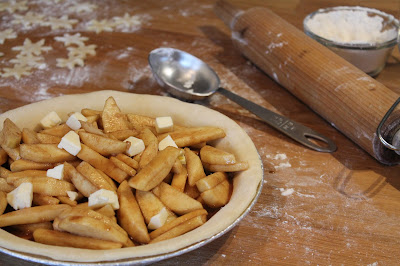Sometimes it's the simple things in life that have the most impact. This blueberry crumb cake is a perfect example of this. I signed up to bring a dessert to an end of year party for my son's preschool last year, and while I had an abundance of ideas, I was short on time.
Thus, I decided to cut some corners and buy a cake mix from the grocery store to save myself some time. While I normally make everything from scratch, now that I'm a mother of two very busy and energetic boys, I've come to the realisation that my sanity is more important than "from scratch".
I decided that I would doctor up the cake mix and put my own spin on things. Instead of the more traditional usages for a box mix such as a layer cake or cupcakes. I decided to make one cake in a 9 inch spring form pan, add blueberries and make a crumb topping to go on top. In making the recipe, I substituted butter in place of oil, milk instead of water, added some good quality vanilla extract (even though I used a vanilla cake mix), and added a teaspoon of cinnamon. These substitutions added a true depth of flavour and richness the basic cake mix ingredients don't provide.
The result of this experiment worked out so beautifully, I was seriously impressed. Not to mention, any second thoughts or guilt for taking the "easy" way by using a box mix went straight out the window. The cake had the most buttery tender crumb and the blueberries add a pop of tang and sweetness. Finally, the crumb topping pulled the cake together by adding a slight crispness with a hit of cinnamon deliciousness. This cake looks like something worthy of the most trendiest of bakeries around. Just the sight it makes me want to curl up under a blanket with a piece and a cup of tea.
Here is the recipe and how I did it:
Ingredients for cake:
1 Vanilla Cake Mix (I used Betty Crocker French Vanilla)
1/2 cup melted butter
1 cup milk
3 eggs
1 teaspoon of vanilla extract
1 teaspoon of cinnamon
pinch of salt
2 cups of blueberries (fresh or frozen)
Ingredients for crumb topping:
3/4 cup granulated sugar
1 cup all purpose flour
Pinch of salt
4 oz melted butter (1/2 cup)
1 teaspoon cinnamon
Method for cake mix:
Preheat oven to 350 degrees F. Grease a 9 inch spring form pan with butter and then add a tablespoon of flour to coat, tapping any excess out into the sink.
Pour contents of cake mix into a medium sized mixing bowl and stir with a whisk to lighten and break up any clumps. Add the blueberries and toss in the mix so that they are evenly distributed.
In a 2 cup wet measure cup (I like to used Pyrex), melt 4 ounces or 1/2 cup of butter. I find it easiest to do this in the microwave. Add 1 cup of milk to the same wet measuring cup (containing the melted butter) bringing the contents to 1 1/2 cups of melted butter / milk.
Add the butter / milk mixture to the cake mix, eggs, vanilla, cinnamon, and salt to the cake mix and berry's and stir with a rubber spatula until well combined. Don't over mix.
Pour the mixture into the prepared pan and set aside while you make the crumb topping.
Method for crumb topping:
Add sugar, flour, cinnamon and salt to a small mixing bowl. Melt butter in microwave and add to the flour mixture. Stir with a fork until clumps form that are about the size of a large pea.
Sprinkle the crumb topping evenly over the cake batter.
Then bake in oven until the crumb is golden and browned, and a cake tester inserted into the middle of the cake comes out clean, about 45 minutes to 1 hour (depending on your oven).
Once cake is fully baked, remove from the oven and let cool in pan for 10 minutes. Then release the latch on the side of pan and allow to cool for another 25 minutes before removing the spring form ring.



















































